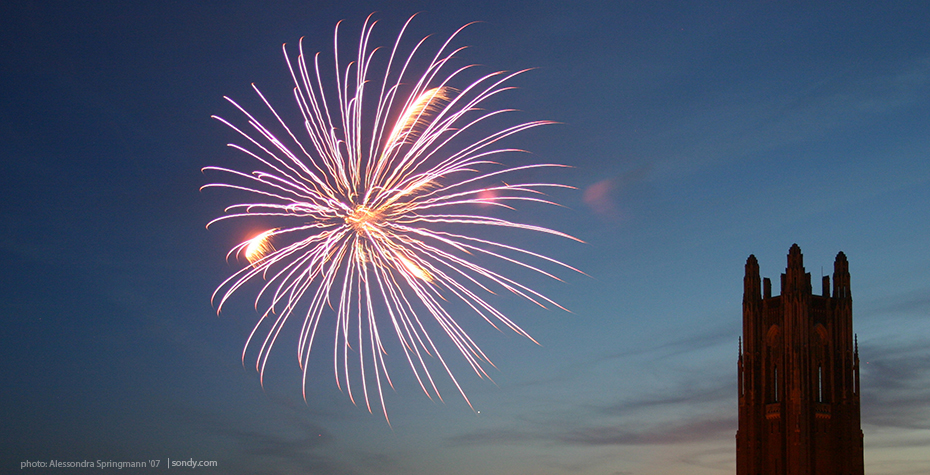Wellesley's Katherine Grandjean Shares Some of the History Behind the National Holiday

As Americans across the country celebrate a day of barbecues, parades, and fireworks, we learned about the fascinating history behind the Fourth of July and the Declaration itself, with Assistant Professor of History Katherine Grandjean.
Grandjean teaches early American and Native American history at Wellesley. Her research focuses primarily on the history of communications, colonization, and encounters between English and Native people. She has also written extensively about print culture in early America. This fall she will publish a book entitled American Passage: The Communications Frontier in Early New England with Harvard University Press.
“When I teach about the Declaration, I try to teach it as a living document with a real history,” she says. “Americans often don’t remember that the imperial crisis [between Britain and the colonies] had been going on for 10 years or so by the time the Declaration was drafted. So it took a really long time for the public to come around to the idea of breaking with Britain. The Declaration was meant to push them a little further down that road.”
Thomas Jefferson, the lead writer of the document in a committee of five that also included Benjamin Franklin and John Adams, saw the letter as an opportunity to appeal to his fellow Americans. “Jefferson knew it was going to be read to people aloud and he wrote it to be compelling to win people over to this position,” Grandjean says. “Because it had been a very controversial position, people really weren’t sure; not everyone had decided at that point that independence was the right path.”
Jefferson’s intentions can be seen in the earliest drafts and printings of the text. “In his draft, he included these bizarre hatch-marks, little markings over words and in between words, which went into some of the first printings of the Declaration,” says Grandjean. “It turns out that they were meant to be clues or little tip-offs to whomever was going to read the document orally: where to pause, how to take breaths, how to rhythmically perform the Declaration. You can tell it was going to be read to Washington’s troops, in the public squares, at Faneuil Hall.” And so it was.
After the Revolution concluded, early celebrations of the Fourth were driven by strong nationalists, who would go on to become members of the Federalist Party (the party of George Washington and John Adams). These celebrations did not focus as much on the Declaration, Grandjean notes, and were influenced by the Federalist belief in a powerful central government. But as the Federalists’ political opponents, the Republicans, gained momentum in the 1790s, different kinds of celebrations of the Fourth emerged. In their version of the Fourth, Republicans changed the emphasis of the holiday to align with their own beliefs in states’ rights and in the diffusion of power. They also focused the holiday around Jefferson himself, party leader and, importantly, drafter of the Declaration of Independence. “It took about 50 years for the Fourth to become a bipartisan, neutral, patriotic event.”
This weekend, as Americans celebrate Independence Day, Jefferson’s words continue to resonate in print, on screen, and aloud. “Essentially the Declaration is a list of complaints, but the preamble, the first two paragraphs, 'When in the course of human events...' is so beautiful, so poetic, so lilting,” says Grandjean. “You know that Jefferson meant for these to move people as they listened.”
When in the course of human events, it becomes necessary for one people to dissolve the political bands which have connected them with another, and to assume among the powers of the earth, the separate and equal station to which the Laws of Nature and of Nature’s God entitle them, a decent respect to the opinions of mankind requires that they should declare the causes which impel them to the separation. We hold these truths to be self-evident, that all men are created equal, that they are endowed by their Creator with certain unalienable rights, that among these are life, liberty and the pursuit of happiness….
Photo Credit: Fireworks at Wellesley in honor of the retirement of President Diana Chapman Walsh ’66 in 2007. Thanks to Alessondra Springmann ’07 for the image.
